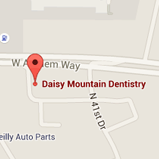Valentine's Day History
February 10th, 2021

Valentine’s Day is best known as a celebration of love in all its forms. Pink hearts, red roses, and cute greeting cards adorn every surface you see. What many people don’t realize is that the modern Valentine’s Day celebration arose from a religious holiday.
St. Valentine’s Day was originally celebrated as a religious feast day in honor of early Christian martyrs. Three martyrs named Valentine were honored: a priest in Rome, the persecuted bishop of Interamna (a town in central Italy), and a saint martyred in Africa. This saint’s day was celebrated throughout Christendom, although it was removed from the Roman Catholic Calendar of Saints in 1969.
The origin of Valentine’s Day as a holiday for lovers began with Geoffrey Chaucer in his 1382 poem “Parlement of Foules.” Chaucer wrote, “For this was on Saint Valentine’s Day, when every bird cometh there to choose his mate,” and the modern romantic holiday was born. William Shakespeare and other writers mentioned Valentine’s Day as a day of love.
Valentine’s Day as we know it came about in the early 19th century. In Victorian England, printers began manufacturing small numbers of cards with romantic verses, lace, ribbons, and other frills. Anonymous Valentine’s Day card were a popular way for young lovers to exchange romantic sentiments in an otherwise prudish time. As the 19th century progressed, printers began mass manufacturing Valentine’s Day cards. People in the United States give an estimated 190 million valentines every year, and up to one billion if you count children exchanging cards at school! With the rise of the Internet, Valentine’s Day e-cards have become a popular mode of communication, with millions of e-cards sent each year.
The other items associated with Valentine’s Day include chocolate and flowers. The tradition of giving chocolates has been around for decades, and Richard Cadbury created the first box of Valentine’s Day chocolates nearly 150 years ago. Today, purchases of chocolate total over $1 billion in the United States alone, with 35 million heart-shaped boxes sold each year. Loved ones also exchange flowers, with red roses being associated with Aphrodite, the Greek goddess of love. On Valentine’s Day itself, florists sell nearly 200 million stems of roses.
Although many people dismiss Valentine’s Day as a commercialized “Hallmark holiday,” it is beloved to couples and romantics across the United States and other countries. The team at Daisy Mountain Dentistry wants to remind all patients that no matter what your celebratory plans, February 14th can be a wonderful day to celebrate the loved ones in your life. Happy Valentine’s Day!
Is Charcoal Teeth Whitening Safe?
February 3rd, 2021

Health and beauty trends surface on the web every day, and it can be difficult to tell which ones are worth your time, or even safe, for that matter. Perhaps one of the biggest dental trends recently on Facebook, YouTube, and Instagram has been teeth whitening through brushing with activated charcoal.
Unfortunately, charcoal whitening isn’t everything the Internet makes it out to be. Activated charcoal isn’t what you use to grill at a summer barbecue; it’s an oxidized substance made from peat, coal, wood, coconut shell or petroleum heated with a gas.
Toxins and surface stains can cling to charcoal due to its adhesive qualities, which is why some people declare it’s perfect for removing discoloration on teeth. Although it may show quick results initially, charcoal is nothing more than a temporary solution.
The abrasive texture may roughen up enamel, which will make it easier for future stains to stick to the surface of your teeth. They may show stains shortly after you use charcoal on them, and may become even more discolored than before.
It’s crucial to emphasize the results of damaged tooth enamel because it cannot replenish itself, which means any damage is permanent. People with receding gums or sensitive teeth especially should steer clear of charcoal because it can make brushing too harsh and worsen sensitivity.
Long-time use can deplete enamel, which over time exposes dentin: the soft, yellowish layer in the tooth. This puts you at a higher risk for cavities, tooth discoloration, and complicated dental problems such as periodontal disease in the future.
The American Dental Association does not approve of charcoal as a safe means for whitening teeth. If you do choose to use it, do so with caution.
Charcoal should be used once every other week at the most, even if your teeth feel fine. The only proven ways to whiten teeth safely are with ADA-approved whitening products or in-office bleaching treatments overseen by a dental professional.
Before you begin any whitening treatment at home, consult with Drs. Peter Vogel, Vijal Vadecha to make sure your teeth won’t be harmed in the process. If you are already experiencing sensitivity, stop charcoal use immediately and make an appointment with our office right away.
If you have questions about whitening or want to schedule an in-office whitening treatment, feel free to give our Anthem office a call today!
Gum Disease in Children
January 27th, 2021

When it comes to gum disease and your child, it’s a good news/bad news situation. The very good news is that children rarely suffer from advanced gum disease, or periodontitis. The not-so-good news? Early gum disease, called gingivitis, is unfortunately an all-too-common childhood problem.
- What does gingivitis look like in children?
Childhood gingivitis has the same causes and symptoms as the adult version. Healthy gums are firm and pink. When bacteria and plaque accumulate on the teeth, your child’s gums become irritated and inflamed. Call our Anthem office right away if you notice any of these symptoms of gingivitis: bleeding gums, puffiness, redness, gum tissue receding from the teeth, or bad breath even after brushing.
- How to Prevent Gingivitis
The most common cause of gingivitis is poor dental care. Creating a regular dental routine is the best way to prevent gingivitis from ever developing! Brushing and flossing with your child for two minutes twice a day from the very beginning helps make healthy cleaning a lifelong habit. Care should be taken to gently brush teeth at the gum line to make sure plaque doesn’t get a chance to build up there and cause gum irritation. And when your child comes in for regular cleanings, Drs. Peter Vogel, Vijal Vadecha can be sure that any plaque that might remain on the teeth is removed.
Two additional notes: as your child approaches adolescence, hormone fluctuations can make gums more sensitive and easily irritated. This is a time to really emphasize careful and gentle brushing and flossing. Also, some medical conditions may make children more pre-disposed to gum problems, so be sure to make us aware of your child’s medical history.
- Uncommon Gum Diseases
While gingivitis is very preventable with proper dental hygiene, there are some rare gum conditions that can occur around the time of puberty that are quite different from gingivitis. Aggressive Periodontitis can cause severe bone loss around the first molars and incisors, even without any kind of plaque build-up, and Generalized Aggressive Periodontitis leads to inflammation of the gums, heavy plaque, and, eventually, loose teeth. Again, these conditions are rare, but if you have a family history of these diseases, let us know. Checkups and cleanings are a great way to catch any potential gum problems, so be sure to bring your child in for regular visits.
Almost all childhood gingivitis is preventable. With careful brushing and flossing at home, and visiting us regularly for checkups and cleanings, your child can enjoy healthy gums and teeth now and learn habits that will keep those gums and teeth healthy for a lifetime. And that is a good news/great news situation!
Losing a Baby Tooth Prematurely
January 20th, 2021

Losing a baby tooth is often an exciting event in a child’s life. It’s a sign your child is growing up, and might even bring a surprise from the Tooth Fairy (or other generous party). But sometimes, a baby tooth is lost due to injury or accident. Don’t panic, but do call our Anthem office as soon as possible.
If Your Child Loses a Tooth
It is important to see your child quickly when a baby tooth is lost through injury. The underlying adult tooth might be affected as well, so it’s always best to come in for an examination of the injured area. The American Dental Association recommends that you find the lost tooth, keep it moist, and bring it with you to the office. Call Drs. Peter Vogel, Vijal Vadecha immediately, and we will let you know the best way to treat your child and deal with the lost tooth.
Baby Teeth Are Important
There are several important reasons to look after your child’s first teeth. Baby teeth not only help with speech and jaw development, but they serve as space holders for permanent teeth. If a primary tooth is lost too early, a permanent tooth might “drift” into the empty space and cause crowding or crookedness.
Space Maintainer
A space maintainer is an appliance that does exactly that—keeps the lost baby tooth’s space free so that the correct permanent tooth will erupt in the proper position. The need for a space maintainer depends on several factors, including your child’s age when the baby tooth is lost and which tooth or teeth are involved. We will be happy to address any concerns you might have about whether or not a space maintainer is needed.
It is important to remember that there are solutions if the Tooth Fairy arrives at your house unexpectedly. Keep calm, call our office, and reassure your child that his or her smile is still beautiful!


